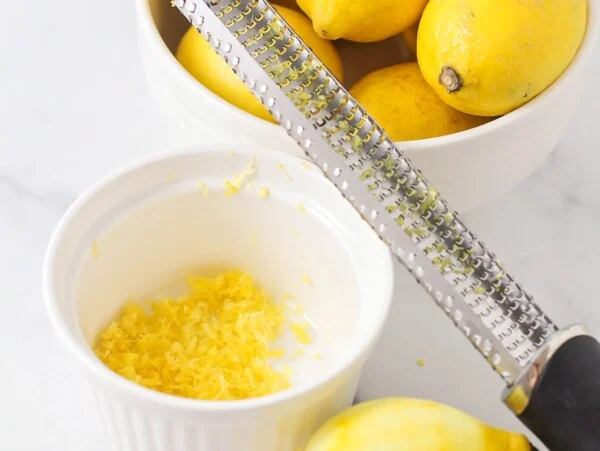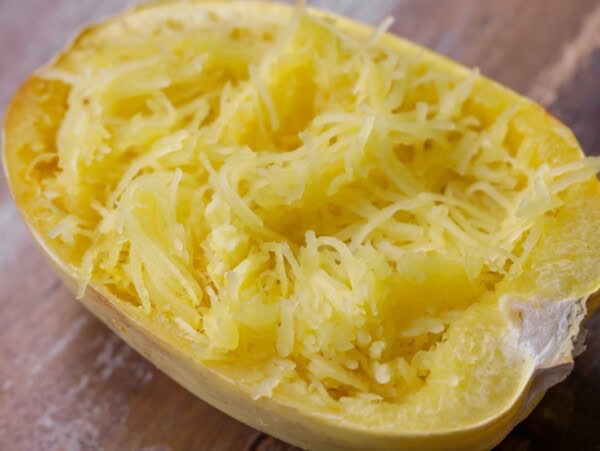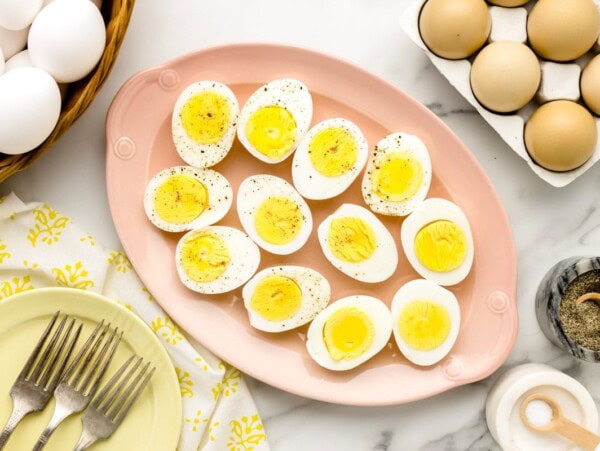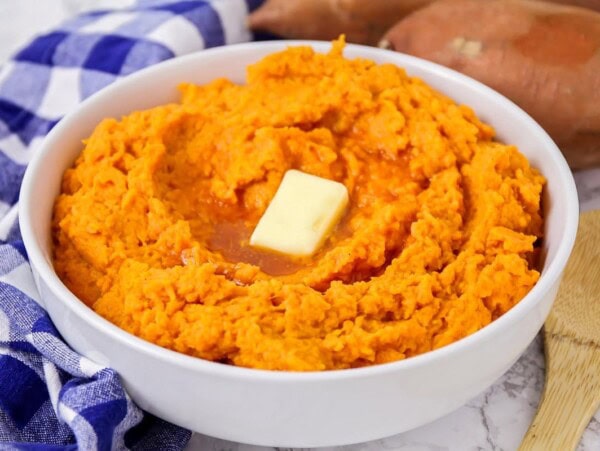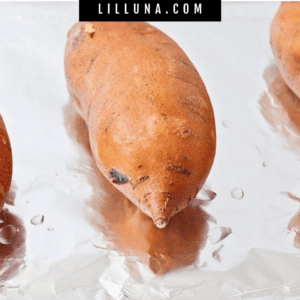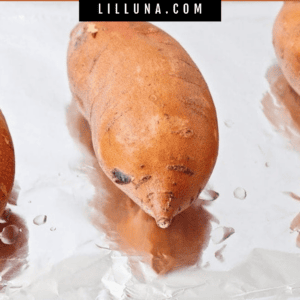This post may contain affiliate links. Please read our disclosure policy.
Yams and sweet potatoes are often confused for each other, but the truth is, they are very different root vegetables! Let’s break down yam vs sweet potato.
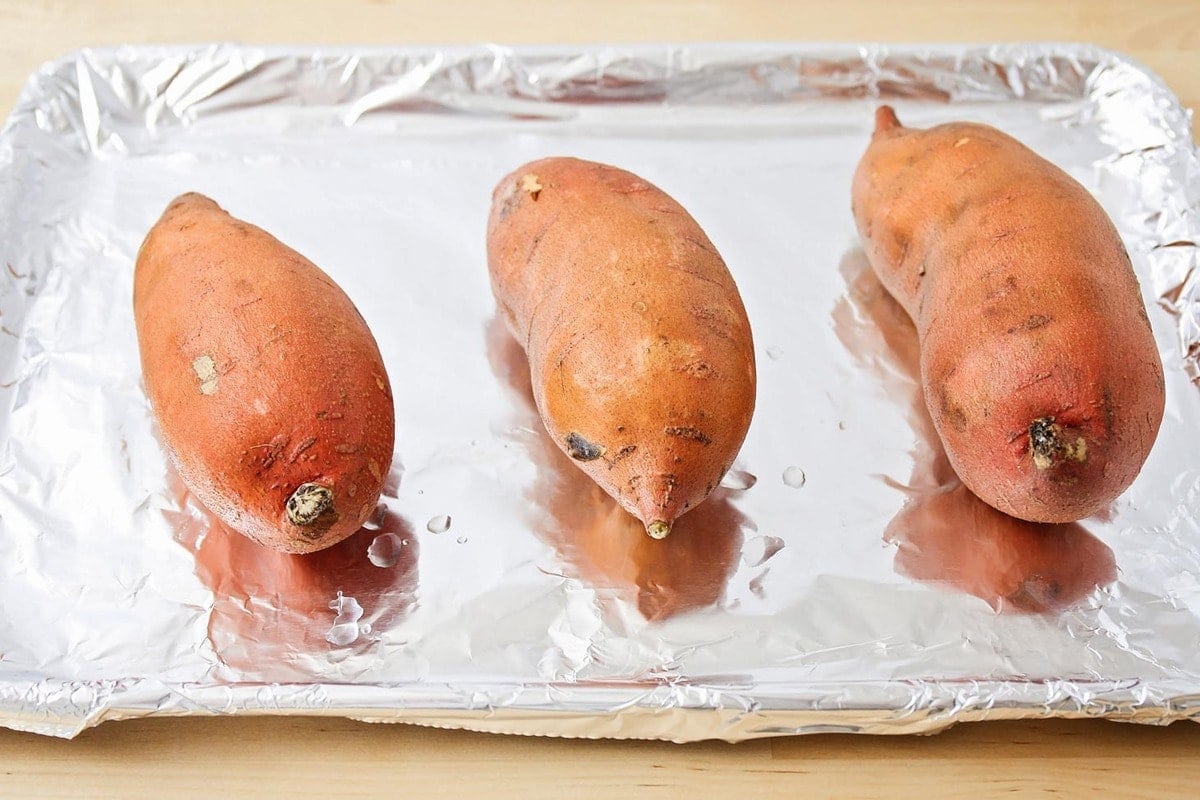
Yam Or Sweet Potato?
Contrary to popular belief, yams and sweet potatoes are NOT the same thing! So, what’s the difference, and what have you actually been using for your sweet potato casserole with marshmallows at Thanksgiving all these years? It’s time to clear up the confusion! If you’re in the United States, you’ve likely, in fact, been using sweet potatoes. While true yams do exist, they are not as commonly found in American grocery stores and are more often found in specialty or international markets.
We use sweet potatoes in all sorts of recipes. From Sweet Potato Casserole and Sweet Potato Pie to Baked Sweet Potato Fries and Pork Stuffed Sweet Potatoes, there’s no shortage of sweet potatoes in the Merkley Household!
Sweet Potato vs Yam at a glance:
Here’s how to tell if you’ve got a yam or a sweet potato just by taking a good look:
- Sweet potatoes. Have smooth, thin skin that ranges from beige to orange to purple. Even though you probably think of sweet potatoes as orange on the inside, they can also be white or purple. Sweet potatoes have a sweet flavor… hence the name of course!
- Yams. have rough and often dark brown to light pink skin with a white to purple flesh. They have a neutral flavor and the texture can be drier and starchy.
Table of Contents

The Differences Between Yams and Sweet Potatoes
At first glance, it’s easy to mix up sweet potatoes and yams. However, there’s much more to these tubers (a fancy term for underground plants that store nutrients in thick roots). We’ve covered some differences between yams and sweet potatoes, but let’s dive into the rest!
Yams
- What are they and where do they come from? Yams come from the Dioscorea family, which is different from the sweet potato family. You’ll find them in Africa, the Caribbean, and parts of Asia.
- What do they taste like and what nutritional value do they have? Yams have a more neutral taste and are a bit drier than sweet potatoes. They are lower in sugar and can be a bit more starchy than sweet potatoes. They also have a lot of potassium and fiber!
- Are there different varieties of yams? Yes! Here are their varieties and what they are known as:
- Dioscorea alata (Water Yam)
- Dioscorea rotundata (White Yam)
- Dioscorea cayenensis (Yellow Yam)
- How are they used in cooking? Yams aren’t as common in the U.S., but they are staples in African and Caribbean cooking. You’ll often find them boiled, baked, or fried in savory dishes.

Sweet Potatoes
- What are they and where do they come from? Sweet potatoes are part of the Convolvulaceae family, which is also known as the morning glory family. They originally come from Central and South America.
- What do they taste like and what nutritional value do they have? Of course sweet potatoes have a sweetness to them and are much softer than yams. Sweet potatoes are higher in sugar and loaded with beta-carotene (which turns into vitamin A), plus they offer a good amount of vitamin C and fiber!
- Are there different varieties of sweet potatoes? Yes! Here are the varieties and examples of each:
- Orange-Fleshed (Beauregard, Jewel)
- White-Fleshed (White Bakes, Hannah)
- Purple-Fleshed (Okinawan, Stokes Purple)
- How are they used in cooking? Sweet potatoes are so versatile! You’ll find them in everything from pies and casseroles to fries and roasted sides. Their natural sweetness makes them perfect for both sweet and savory recipes.
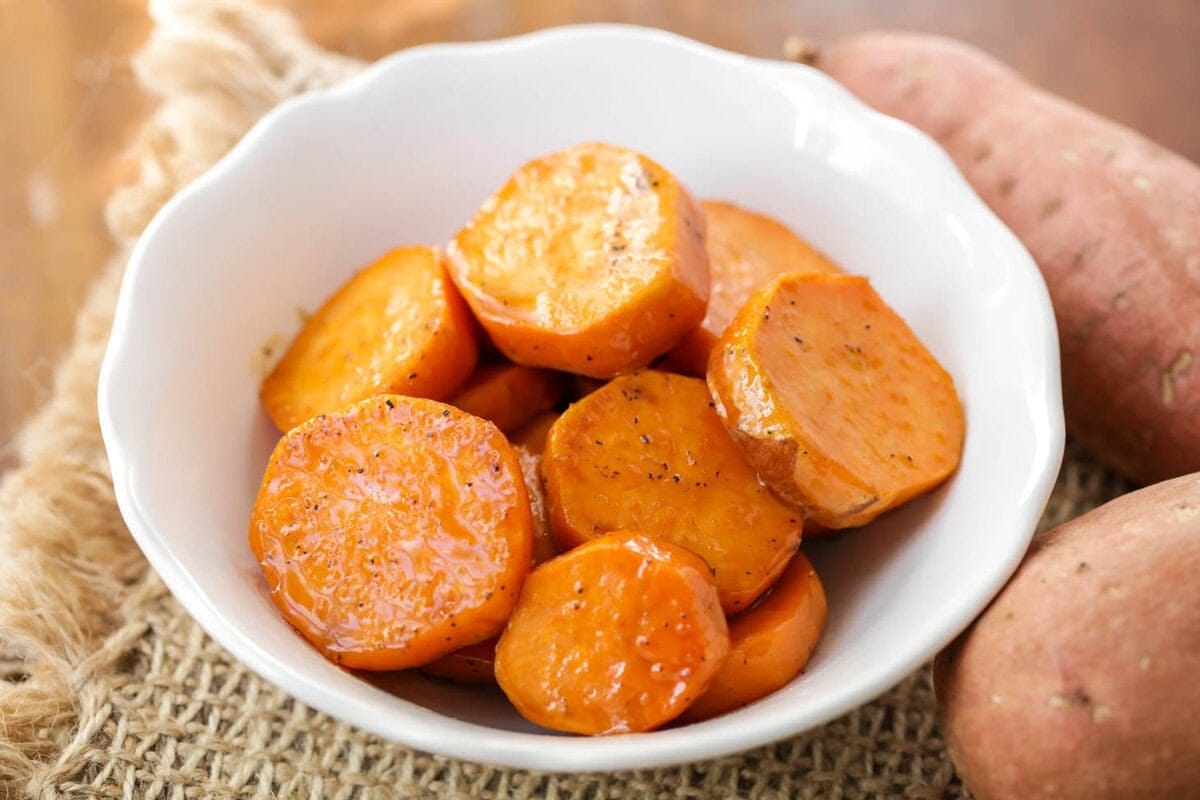
More like this
Kitchen Tips
Sweet potato recipes
Candied Sweet Potatoes
18 mins
Roasted Sweet Potato
30 mins
Twice Baked Sweet Potatoes
1 hr 25 mins
Mashed Sweet Potatoes
55 mins
FAQs
Store them in a cool, dry place with good ventilation. Avoid refrigerating them, as this can cause a hard center and ruin the flavor. Use within a few weeks for best quality.
Look for firm, smooth skin with no soft spots or wrinkles. Avoid any that have sprouts or look dried-out. Fresh sweet potatoes should feel heavy for their size.
Yes, you can freeze both. For best results, cook them first (roast, bake, or boil), then cool, and freeze in airtight containers. Raw sweet potatoes or yams can become mushy when thawed.
